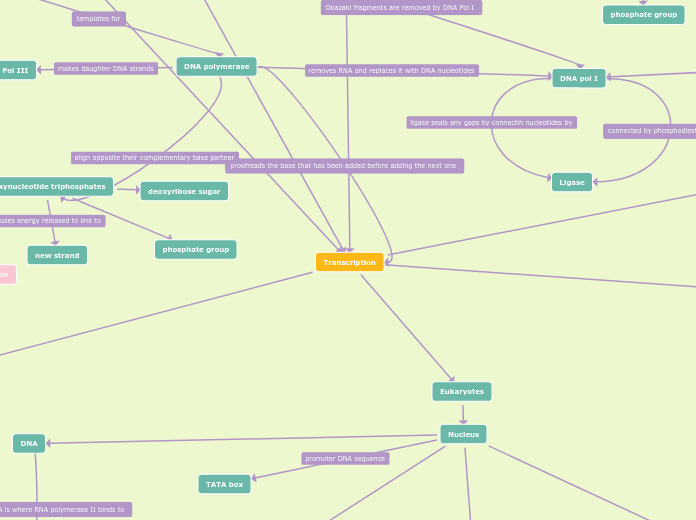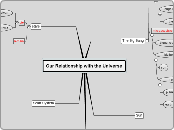12U Earth & Space Unit 2
Effects of space on humans
Skin
Without an atmosphere for protection the body
is exposed to high amount of solar radiation, which can lead to tissue breakdown and lower immunity.
Bones and muscle
Without gravity, bones are no longer needed to
support your body. As a result, you may lose 1.5% of bone tissue per month of being in microgravity. Muscles begin to weaken also due to the lack of forces against them
Lack of gravity
Casuing you to have motion sickness
Solar Radiation
The intense solar radiation would cause a massive sunburn effect. Skin would burn in seconds.
Blood and Body Fluids
Body fluids may be boiled(vaporized) due to
vacuum. Your body might be expanded to twice its size
due to this effect.
Body Temperature
Although it is cold in space, it would take some time before your body cooled. In some cases of prolonged exposure, frost can occur on limbs
Gas Exchange (Breathing)
Due to the lack of presure, gases (such as O2)
would quickly be used up. After 9 to 12 seconds you would pass out.
Benefits of Space Exploration
Many of the inventions due to space exploration that would benefit us in our daily life.
Water Filters
Cordless Tools
Safety Grooving
Adjustable Fire Detector
Long Distance Telecommunications
Shoe Insoles
Ear Thermometer
Memory foam
Scratch resistant lenses
Invisable braces
Relationship between our solar system and
The Milky Way
Our Earth orbits the Sun in our Solar System. Our Sun is one star among the billions in the Milky Way Galaxy. Our Milky Way Galaxy is one among the billions of galaxies in our Universe.
Interaction between star, planets and satellites
Eclipses are named for the object
that is darkened (as viewed from
Earth)
solar eclipses
A solar eclipse occurs when the Moon is
between the Earth and Sun. When the Moon’s shadow covers part of the Earth, it only happens at New Moon and observers in the “umbra” see a total eclipse(corona is visible).Those in the “penumbra” see a partial eclipse
A solar eclipse casts a shadow on the
Earth. The umbra is the darkest part of
the shadow, the penumbra is the lighter
part.
Partial eclipses are much more common
than total eclipses.
Total eclipses occur at the umbra.
At the point of totality, the sun’s corona is visible.
Lunar eclipses
Lunar eclipses occur when the Earth
casts a shadow on the Moon.
Lunar eclipses are much more common
than solar eclipses occurring approximately twice per year.
Moon appear Red During Total Lunar Eclipse
A total lunar eclipse can only occur during Full Moon, when Earth blocks the Sunlight normally reflected by the Moon. As light passes through Earth’s atmosphere,short wavelength, like blue, are scattered. Only the long-wavelength radiation, red light, are bent through Earth's atmosphere and caused the reddish colour of the Moon.
Formation of moon/features
Simultaneous Formation
Theory
The Moon was created along with
Earth at its formation via accretion.
Capture Theory
The Moon was a wandering body (like an
asteroid) that formed elsewhere in the solar system and was captured by Earth's gravity as it passed nearby.
Spin or Fission Theory
Moon was once part of Earth but separated
from it early in their history. Earth had been spinning so fast that some material broke away and began to orbit the planet.
One theory of the formation of The moon was the Giant Impact theory.
Analysis of samples brought back from NASA Apollo missions suggest: Earth and Moon are a result of a giant impact between an early proto-planet and an astronomical body called Theia.
Regolith is the layer of loose, ground-up
rock on the lunar surface.
(Moon was heavily bombarded during its
first 800 million years, resulted in breaking and heating of rocks on Moon’s surface)
REGOLITH AVERAGES SEVERAL
METRES IN THICKNESS BUT VARIES
ACROSS THE SURFACE.
The regolith is likely derived from
broken up basalt lava.
分支主題
Rills was found in the Maria, long, deep ancient lava channels and look like meandering valley-like structures
Rays are the long trails ejecta that
radiate outward from a crater.
Ejecta is the material blasted out of the
crater during the impact fell back to the
surface
Thickest closest to the crater and
thinnest further away.
Early lunar observers described the
Moon in terms of light and dark
areas.
Albedo is a property of objects that
describes how much light they reflect.
Lunar maria are dark (low albedo), smooth
plains; composed of volcanic rock likely
basalt.
Galileo described dark areas on the Moon
as seas or maria (mare).
Formed 3-4 billion years ago and intense bombardment formed highlands. Lava welled up from Moon’s interior
and filled in large impact basins. This lava fill created dark, smooth plains of maria Flowing lava in maria scarred the
surface with rilles.
Lunar highlands are light in colour (high
albedo), mountainous areas that are heavily
cratered.
Mountains up to 7500 m (25,000 ft) tall. Ridges - long, narrow elevations of rock that
crisscross the moon’s surface.
The Moon is covered by impact craters of all sizes. NO erosion, except for surface creep and wear caused by recent impacts because it has no atmosphere or flowing water. No internal activity.
Impact craters are formed by meteorites or asteroids hitting the surface of the Moon and they occur in many different sizes.
Central peak is the higher area in the
center of larger craters.
Crust: 60-100 km thick ,thickest on far side. Mantle: 1,000 km thick, possibly made of Si, Mg and Fe. Core: radius less than
700 km, Non-uniform (liquid and solid)
Revolution: Moon orbits the Earth
every 27.3 days. Rotation: Moon turns on its axis
every 27.3 days
We always see the same side of the Moon because its period of rotation equals its revolution! This is called synchronous rotation. This is called synchronous rotation.
Earth’s only natural satellite. Moon’s diameter is 3,468 km and ¼ size of Earth. Moon orbits Earth at a distance of about
384,000 km (240,000 miles)
Moon orbits Earth at a 5o angle with
respect to the Earth’s orbit around the
Sun.
No atmosphere and temperatures are extreme: Daytime = 130°C (265°F) and Nighttime = -190°C (-310 °F). The gravity is 1/6 Earth’s gravity – too low to retain an atmophere.
Composition of planets
Terrestrial planets
These planets made up of rocks or metals with a hard surface. Terrestrial planets also have a molten heavy-metal core, few moons and topological features such as valleys, volcanoes and craters.
Jovian Planets
These planets have no solid surfaces and are essentially large balls of gas composed primarily of hydrogen and helium.
Comet orbits, periodic comets
Periodic comets are comets that have a orbital period less than 200 years or that have been observed during more than a single perihelion passage
Comets go around the Sun in a highly elliptical orbit. They can spend hundreds and thousands of years out in the depths of the solar system before they return to Sun at their perihelion.
Like all orbiting bodies, comets follow Kepler's Laws - the closer they are to the Sun, the faster they move.
The solar wind (high energy particles)
vapourizes the nucleus producing
spectacular tails of dust and gas (coma).
As they move away from the sun the tail
actually precedes them!
Comets are like “dirty snowballs” consisting of
a nucleus of dust in ice, CO2, methane and
ammonia.
When they pass close to the Sun, they become
visible.
Asteroids, meteors, meteoroid, meteorite
A meteorite is the part of the meteoroid that
does not burn up in the atmosphere. When meteorites hit the surface, they may form an impact crater.
On the basis of their composition, meteorites
found on Earth are divided into three categories: Iron, Stony and Stony irons
Stony Iron meteorites: are composed of iron and silicate minerals and it make up <1% of all meteorites found.
Stony meteorites: are mixtures of minerals like feldspar,
pyroxene and olivine, it look similar to Earth rocks and make up 94% of all meteorites found
Iron meteorites: are composed of iron and nickel, have fusion crusts and distinctive intergrown Fe-Ni crystals. It makes up 5% of all meteorites found.
A meteoroid is any debris that falls toward the
Earth. Meteoroids range in size from molecules to asteroids.
A meteor is the millisecond streak of light
and heat produced when a meteoroid burns
up in the atmosphere. Mistakenly termed “shooting stars”.
A meteor shower is produced when the Earth
passes through the dust tail of a comet.
Many meteors may be seen at peak times (up to
100 per hour) at predictable times of the year.
The Asteroid Belt:located between the orbits of Jupiter and Mars.
The belt is composed of varying sized pieces
of rock debris (1 to 1000 km in diameter) with
pitted and irregular surfaces.
Asteroids were once thought to be destroyed
planets. Today we believe they represent the
composition of the early Solar System.
Asteroids (sometimes forming
meteors) and comets are examples of
this leftover debris.
Asteroids may collide with each other and break into smaller pieces. Occasionally, these pieces are attracted by gravity towards other planets.
Interplanetary debris
Material that remained after the formation of the planets and
satellites; Some crashed into planets and diminished; Some was ejected out of solar system; Some remained became comets and asteroids.
Most asteroids trapped between Jupiter and Mars in the asteroid belt which are attracted by Jupiter’s gravitational pull
Leftover materials from
planets and satellites that
includes comets,
asteroids
The role of gravity
Gravity pulls matters together and the cloud dust becomes more dense, it spins and flattens and eventually becomes a a rotating disk with a dense center
Planetesimal formation
Tiny grains of matter combined/collided
Grew from small to massive objects over thousands
of years
Sometimes they destroyed each other but most
often they grew larger
Sun formation
The Sun and the rest of the solar system formed from a giant, rotating cloud of gas and dust called a solar nebula about 4.5 billion years ago. As the nebula collapsed because of its overwhelming gravity, it spun faster and flattened into a disk.
Rotating disk
Accretion disk: An accretion disk is a structure formed by diffuse material in orbital motion around a massive central body. The central body is typically a star. Friction causes orbiting material in the disk to spiral inward towards the central body.
Interstellar clouds
An interstellar cloud is generally an accumulation of gas, plasma, and dust in our and other galaxies. Put differently, an interstellar cloud is a denser-than-average region of the interstellar medium(ISM).
The matter and radiation that exists in the space between the star systems in a galaxy. Depending on the density, size, and temperature of a given cloud, its hydrogen can be neutral, making an H I region; ionized, or plasma making it an H II region; or molecular, which are referred to simply as molecular clouds, or sometime dense clouds.
Neutral and ionized clouds are sometimes also called diffuse clouds. An interstellar cloud is formed by the gas and dust particles from a red giant in its later life.
Shape of our solar system
Stage 1: The cloud spins faster and contracts. It collapses at the equatorial plan and becomes flat. Then it eventually looks like arotating disk with adense center
Stage 2: Gravity and rotation within the nebula cause
contraction over time forming a dense centre
(protosun) and a thin outer flattened disk.
Stage 2: Outer planets = more volatile, gases (ie.
CO, CH4)
Stage 1: At first, density of
gases is low, so that the gravity draws matter together. Once it collapses, it then accelerates and cloud become more dense
Stage 2: The center of rotating disk becomes more dense. Temperature rises greatly and enough pressure
to fuse hydrogen into helium. Temperature range is large depending on distance
from early Sun
Stage 2: Inner planets = richer in higher melting
point elements (ie. Fe, Si)
The solar system formed from the collapse of an interstellar cloud.
Clouds of H and He,
small amounts of other
elements and dust
Dust blocks light from
stars and also reflects
light/illuminates the clouds









